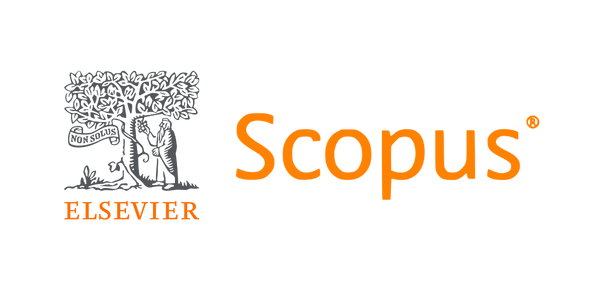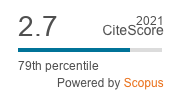Data visualization and pattern discovery in IoT: a nonlinear optimization and AI-based knowledge extraction approach
Keywords:
AI-Based Pattern Discovery; Smart Agriculture; Industrial IoT; Anomaly Detection; Dimensionality Reduction; Graph Neural Networks; Reinforcement Learning.Abstract
The fast multiplication of Internet of Things (IoT) ecosystems has led to huge amounts of heterogeneous, high-dimensional, and dynamic data, which are difficult to analyze and make decisions. Traditional linear visualization and analysis tools are also not always suitable to show the nonlinear correlations, latent dependencies, and changing patterns in IoT data. This paper attempts to fill this gap by presenting a holistic nonlinear optimization and artificial intelligence (AI)-supported framework of IoT data visualization and pattern discovery. The given method is a combination of nonlinear optimization of features with the help of metaheuristic algorithms and sophisticated dimensionality reduction techniques to preserve the important information with reducing redundancy. The knowledge, anomalies, and predictive trends in sensor networks are then extracted, detected, and identified using AI-driven models such as deep neural networks, graph neural networks, and reinforcement learning agents. An interpretable visualization layer that is trained on manifold learning methods like UMAP is more interpretable since the optimized feature spaces are then mapped to low-dimensional human-readable visual representations. The framework is proven by case-studies of smart agriculture and industrial IoT that prove the framework effective in optimization of irrigation schemes, enhancing crop yield forecasting, facilitating early fault detection, and minimizing downtime in production systems. The results of experiments indicate that it is more accurate, separates clusters better and that it is less complex to compute in comparison to the conventional methods to linear analysis like PCA and k-means clustering. The results highlight the disruptive nature of AI-enhanced nonlinear optimization to fill the gap between raw IoT data and actionable knowledge and thus provide scalable, interpretable, and intelligent analytics to next-generation IoT enabled applications.References
Minoli, D., Sohraby, K., & Occhiogrosso, B. (2017). IoT considerations, requirements, and architectures for smart buildings—Energy optimization and next-generation building management systems. IEEE Internet of Things Journal, 4(1), 269–283. https://doi.org/10.1109/JIOT.2017.2648881
Jolliffe, I. T., &Cadima, J. (2016). Principal component analysis: A review and recent developments. Philosophical Transactions of the Royal Society A: Mathematical, Physical and Engineering Sciences, 374(2065), 1–16. https://doi.org/10.1098/rsta.2015.0202
van der Maaten, L., & Hinton, G. (2008). Visualizing data using t-SNE. Journal of Machine Learning Research, 9, 2579–2605.
McInnes, L., Healy, J., & Melville, J. (2018). UMAP: Uniform manifold approximation and projection for dimension reduction. arXiv preprint, arXiv:1802.03426. https://doi.org/10.48550/1802.03426
Deep, K., Singh, K. P., Kansal, M. L., & Mohan, C. (2009). A real coded genetic algorithm for solving integer and mixed integer optimization problems. Applied Mathematics and Computation, 212(2), 505–518. https://doi.org/10.1016/j.amc.2009.02.044
Kennedy, J., & Eberhart, R. (1995). Particle swarm optimization. In Proceedings of IEEE International Conference on Neural Networks (pp. 1942–1948). Perth, WA, Australia. https://doi.org/10.1109/ICNN.1995.488968
Veerappan, S. (2025). Harmonic feature extraction and deep fusion networks for music genre classification. National Journal of Speech and Audio Processing, 1(1), 37–44.
Yuan, X., Xu, Y., & Wang, C. (2013). A novel manifold learning approach for nonlinear dimensionality reduction. Pattern Recognition Letters, 34(10), 1141–1147. https://doi.org/10.1016/j.patrec.2013.03.010
LeCun, Y., Bengio, Y., & Hinton, G. (2015). Deep learning. Nature, 521(7553), 436–444. https://doi.org/10.1038/nature14539
Wu, Z., Pan, S., Chen, F., Long, G., Zhang, C., & Yu, P. (2021). A comprehensive survey on graph neural networks. IEEE Transactions on Neural Networks and Learning Systems, 32(1), 4–24. https://doi.org/10.1109/TNNLS.2020.2978386
Arulkumaran, K., Deisenroth, M. P., Brundage, M., &Bharath, A. A. (2017). Deep reinforcement learning: A brief survey. IEEE Signal Processing Magazine, 34(6), 26–38. https://doi.org/10.1109/MSP.2017.2743240
ArunPrasath, C. (2025). Performance analysis of induction motor drives under nonlinear load conditions. National Journal of Electrical Electronics and Automation Technologies, 1(1), 48–54.
Prasath, C. A. (2024). Energy-efficient routing protocols for IoT-enabled wireless sensor networks. Journal of Wireless Sensor Networks and IoT, 1(1), 1-7. https://doi.org/10.31838/WSNIOT/01.01.01
Surendar, A. (2025). Design and optimization of a compact UWB antenna for IoT applications. National Journal of RF Circuits and Wireless Systems, 2(1), 1–8.
Reginald, P. J. (2025). RF performance evaluation of integrated terahertz communication systems for 6G. National Journal of RF Circuits and Wireless Systems, 2(1), 9–20.
Velliangiri, A. (2025). An edge-aware signal processing framework for structural health monitoring in IoT sensor networks. National Journal of Signal and Image Processing, 1(1), 18–25.
Anandhi, S., Rajendrakumar, R., Padmapriya, T., Manikanthan, S. V., Jebanazer, J. J., &Rajasekhar, J. (2024). Implementation of VLSI systems incorporating advanced cryptography model for FPGA-IoT application. Journal of VLSI Circuits and Systems, 6(2), 107–114. https://doi.org/10.31838/jvcs/06.02.12
Kadham, S. M., Mustafa, M. A., Abbass, N. K., et al. (2022). IoT and artificial intelligence–based fuzzy-integral N-transform for sustainable groundwater management. Applied Geomatics. https://doi.org/10.1007/s12518-022-00479-3
VenkateshMuniyandi. (2024). AI-Powered Document Processing with Azure Form Recognizer and Cognitive Search. Journal of Computational Analysis and Applications (JoCAAA), 33(05), 1884–1902.
Rahim, R. (2024). Optimizing reconfigurable architectures for enhanced performance in computing. SCCTS Transactions on Reconfigurable Computing, 1(1), 11-15. https://doi.org/10.31838/RCC/01.01.03
Muniyandi, Venkatesh, Pradeep Kumar Muthukamatchi, and PrashanthiMatam. "Scalable Microservices Architecture Using Azure Kubernetes Service (AKS)." 2025 International Conference on Computing Technologies & Data Communication (ICCTDC). IEEE, 2025.
R. Chellu, "Integrating Google Cloud Identity and Access Management (IAM) with Managed File Transfer for Data Protection," 2025 International Conference on Computing Technologies (ICOCT), Bengaluru, India, 2025, pp. 1-8, doi:10.1109/ICOCT64433.2025.11118469.
Downloads
Published
How to Cite
Issue
Section
License
Copyright (c) 2025 Results in Nonlinear Analysis

This work is licensed under a Creative Commons Attribution 4.0 International License.



